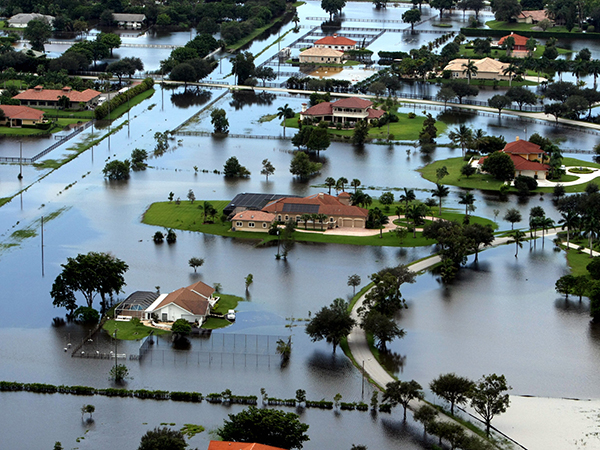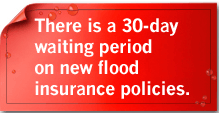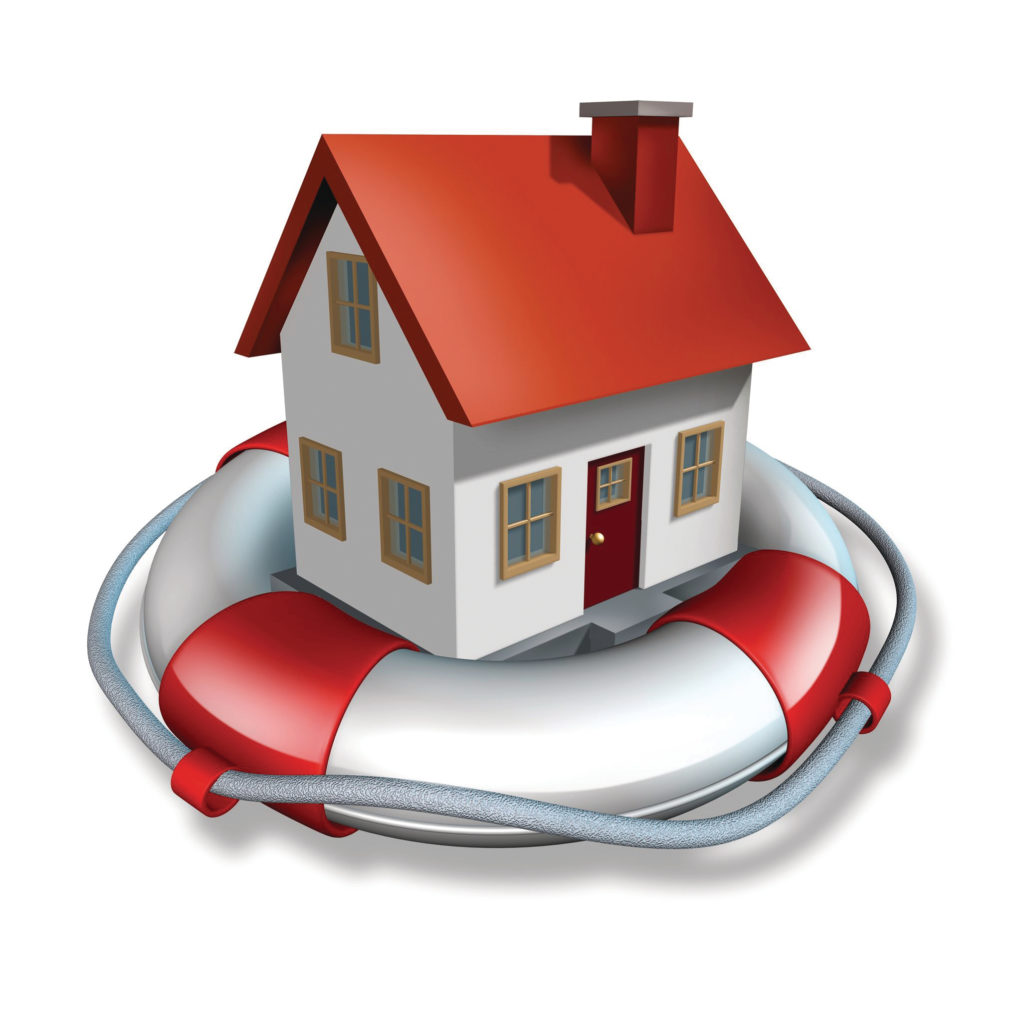Flood Insurance
Flood Insurance
By: Allen Financial Insurance Group
Contact us for a no obligation flood insurance quote today


Who Needs Flood Insurance?
When your home is flooded, it can lead to financial ruin if you don’t have the proper insurance. And note this: A basic homeowners policy won’t cover your flood damage! You need flood insurance — a special policy backed by the federal government, with cooperation from local communities and private insurance companies.
About 200 insurance companies, possibly including the company that already handles your homeowners or auto insurance, write and service flood insurance policies for the government, which finances the program through premiums.
Although flood insurance is relatively inexpensive, most Americans neglect to purchase protection. Only about one-quarter of the homes in areas most vulnerable are insured against flood loss, according to the Federal Insurance Administration (FIA). In those areas, flooding is 26 times more likely to occur than a fire during the course of a typical 30-year mortgage.
The average flood insurance premium in 2000 was $353 a year, with policies starting at $112 per year. The average amount of flood insurance purchased in 2000 was $124,089. Policies are available in three forms: “Dwelling” (most homes); “General Property” (apartments and businesses); and “Residential Condominium Building Association Policy” (condominiums). All have limits on coverage. You might be eligible for discounts if you live in a low- to moderate-risk zone.In general, the policy does not take effect until 30 days after you purchase flood insurance. So, if the weather forecast announces a flood alert for your area and you run to purchase coverage, it’s already too late. You will not be insured if you buy a policy a few days before a flood.
About National Flood Insurance
In 1968, Congress created the National Flood Insurance Program (NFIP) in response to the rising cost of taxpayer funded disaster relief for flood victims and the increasing amount of damage caused by floods. The Mitigation Division a component of the Federal Emergency Management Agency (FEMA) manages the NFIP, and oversees the floodplain management and mapping components of the Program.
Nearly 20,000 communities across the United States and its territories participate in the NFIP by adopting and enforcing floodplain management ordinances to reduce future flood damage. In exchange, the NFIP makes Federally backed flood insurance available to homeowners, renters, and business owners in these communities.
Flood damage is reduced by nearly $1 billion a year through partnerships with communities, the insurance industry, and the lending industry. Further, buildings constructed in compliance with NFIP building standards suffer approximately 80 percent less damage annually than those not built in compliance. And, every $3 paid in flood insurance claims saves $1 in disaster assistance payments.
The NFIP is self-supporting for the average historical loss year, which means that operating expenses and flood insurance claims are not paid for by the taxpayer, but through premiums collected for flood insurance policies. The Program has borrowing authority from the U.S. Treasury for times when losses are heavy, however, these loans are paid back with interest.
Flood Insurance is required by law
To get secured financing to buy, build, or improve structures in Special Flood Hazard Areas (SFHA’s) you will be required to purchase flood insurance. Lending institutions that are federally regulated or federally insured must determine if the structure is located in a SFHA and must provide written notice requiring flood insurance.
Flood insurance is available to any property owner located in a community participating in the NFIP. All areas are susceptible to flooding, although to varying degrees, in fact, 25% of all flood claims occur in the low-to-moderate risk areas. Flooding can be caused by heavy rains, melting snow, by inadequate drainage systems, failed protective devices such as levees and dams, as well as by tropical storms and hurricanes.
There’s a big difference between having to buy flood insurance because the law says you must and choosing to buy flood coverage because it’s in your best interests to do so. We recommend that all property owners purchase and keep flood insurance because it is the best means of recovery from flood damaged.
Keep the peace of mind in knowing that your property will be protected from damages from the next storm and you’re not left to cover the losses yourself?
For more information on the National Flood Insurance Program and for a copy of the 2005 manual, visit this website, http://www.fema.gov/nfip/manual05_05.shtm
Different types of flood policies are available based on your property’s location and flood history.
|
Standard Flood Policy If you live in a community that participates in the NFIP, your building and its contents can be covered. You must apply for building coverage and contents coverage separately.
|
Preferred Risk Flood Policy
If your home or business is in a low or moderate risk zone, your building may qualify for a low-cost Preferred Risk Policy. Premiums for both building and contents start at just under $119 |
Save ($$$) with a Preferred Risk Policy
The Preferred Risk Policy is a lower-cost option covering buildings and contents in low-to-moderate risk areas. It is available for both residential and commercial properties and covers both your home and its contents for one combined price, with the same coverage limits as standard flood insurance policies.
To qualify for a Preferred Risk Policy, your building must be in a low-to-moderate risk flood zone and have had minimal losses.
Residential Preferred Risk Policy premiums start as low as $119 per year for building and contents coverage.
Commercial premiums start at $550 per year for combined building and contents coverage, or $145 per year for contents only.
The NFIP offers three different types of Standard Flood Policies.
- Dwelling – Insures residential buildings (buildings with 1 to 4 families) and/or contents, residential condominium units, manufactured homes, and renters contents.
- General Property – Insures residential buildings of more than four families, as well as commercial buildings (schools, churches, businesses, etc.).
- Residential Condominium Building Association Policy (RCBAP) – Insures eligible buildings owned by condominium associations.
Standard Flood Insurance Coverage Limits
| Coverage Type | Coverage Limit |
| One to four-family structure | $ 250,000 |
| One to four-family home contents | $ 100,000 |
| Other residential structures | $ 250,000 |
| Other residential contents | $ 100,000 |
| Business structure | $ 500,000 |
| Business contents | $ 500,000 |
| Renter contents | $ 100,000 |
| RCBAP | $ 250,000 x number of units |


